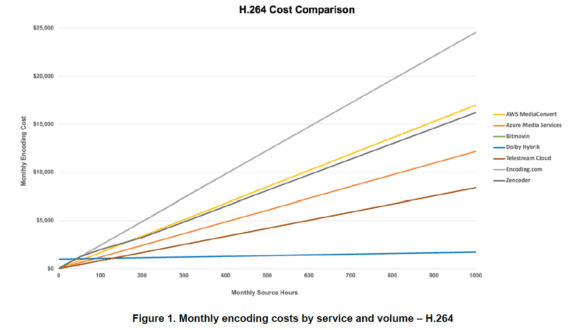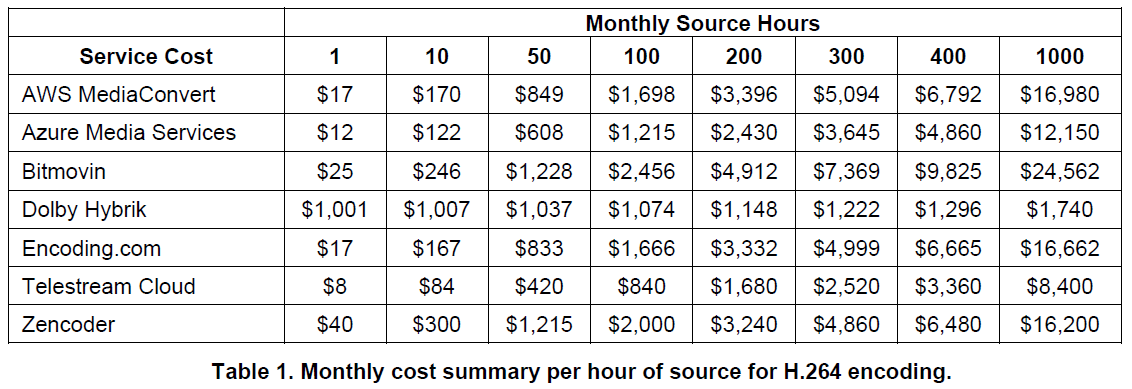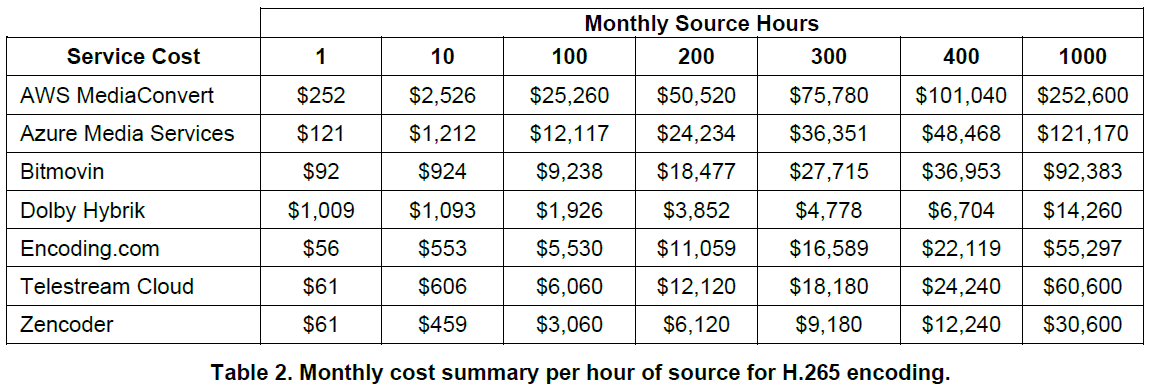This whitepaper, sponsored by Dolby/Hybrik, tracks cloud encoding pricing for H.264 and HEVC output and reveals dramatic price differences among popular services.
I’ve just completed a whitepaper sponsored by Dolby/Hybrik to compare pricing for multiples of one hour of H.264 and HEVC encoding using the recommended encoding ladders in the Apple HLS Authoring Specifications. You can download the whitepaper here. A few points about the methodology (covered in detail in the paper).
- The paper compares costs for the highest-quality output available from each service, usually two-pass encoding (though one service only offers single-pass encoding). You may be able to achieve lower pricing by opting for single-pass, though we didn’t encode files to measure the quality delta.
- The paper compares the lowest published pricing for all services; as stated in the paper, most larger customers can negotiate much better pricing than shown.
- The paper compares SaaS pricing; several vendors (AWS Elemental, encoding.com) offer Platform as a Service pricing (with AWS Elemental at $400/month), while others (Bitmovin, encoding.com) offer reduced-cost plans that enable you to run their software on your own hardware. You probably can achieve much lower pricing from these services by exploring these plans.
Here are the results for H.264 encoding.
Here are the results for HEVC encoding.
As the paper concludes, “for most high-volume streaming producers, encoding is not yet a commodity, as most companies require features, workflows, and outputs that not all vendors support. Still, when multiple vendors check all the required boxes, price and quality become critical differentiators. Remember that you really can’t assess price without considering output quality, so to get to an apples-to-apples pricing comparison, you’ll have to roll up your sleeves and perform test encodes on all services that make your shortlist.”
You can download the whitepaper here.
 Streaming Learning Center Where Streaming Professionals Learn to Excel
Streaming Learning Center Where Streaming Professionals Learn to Excel












